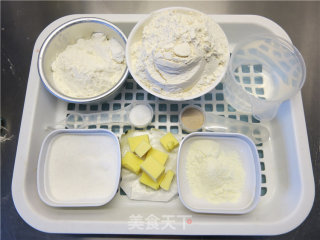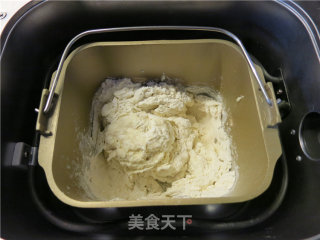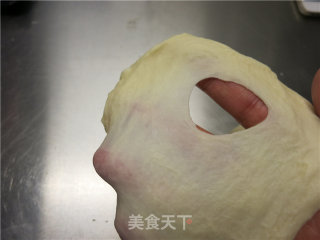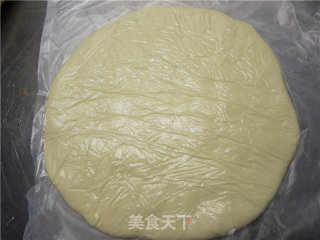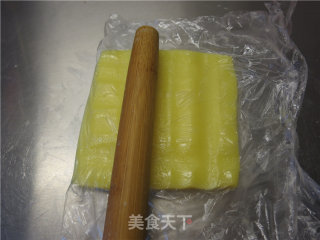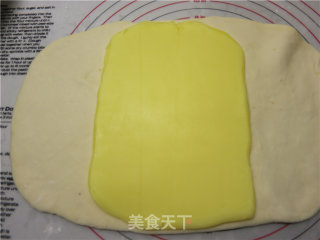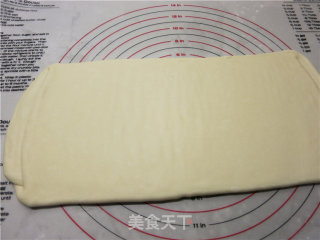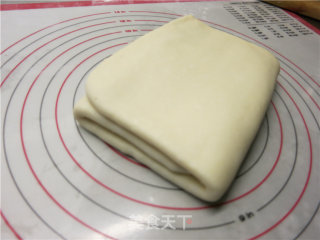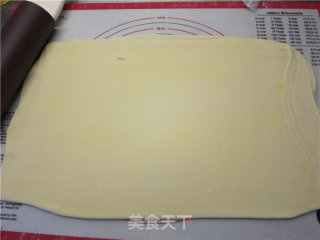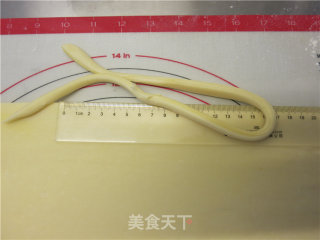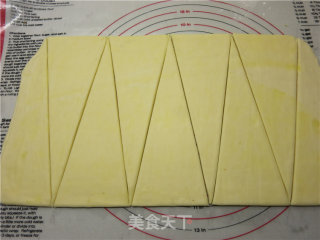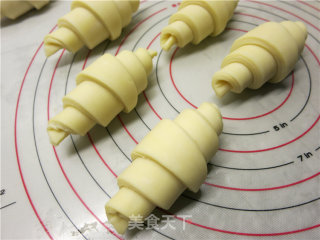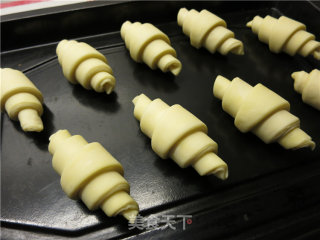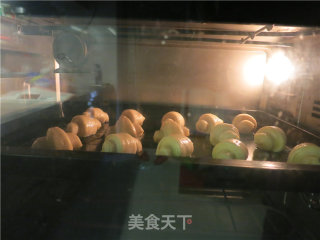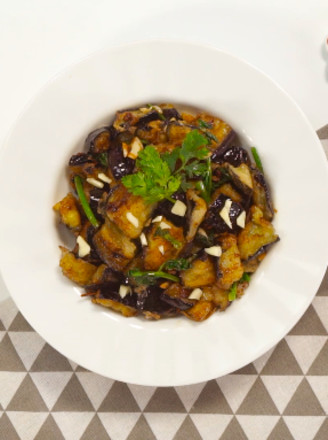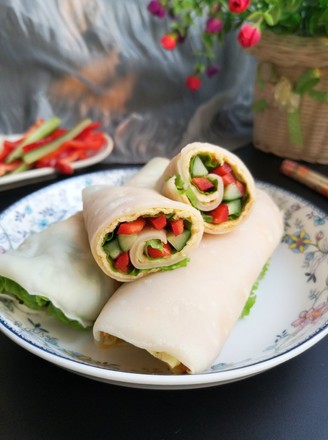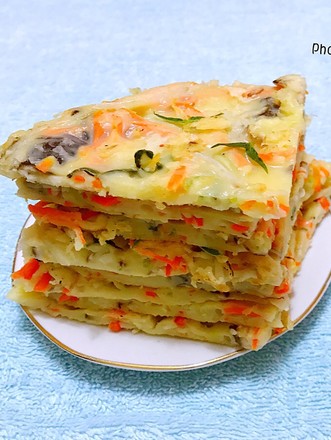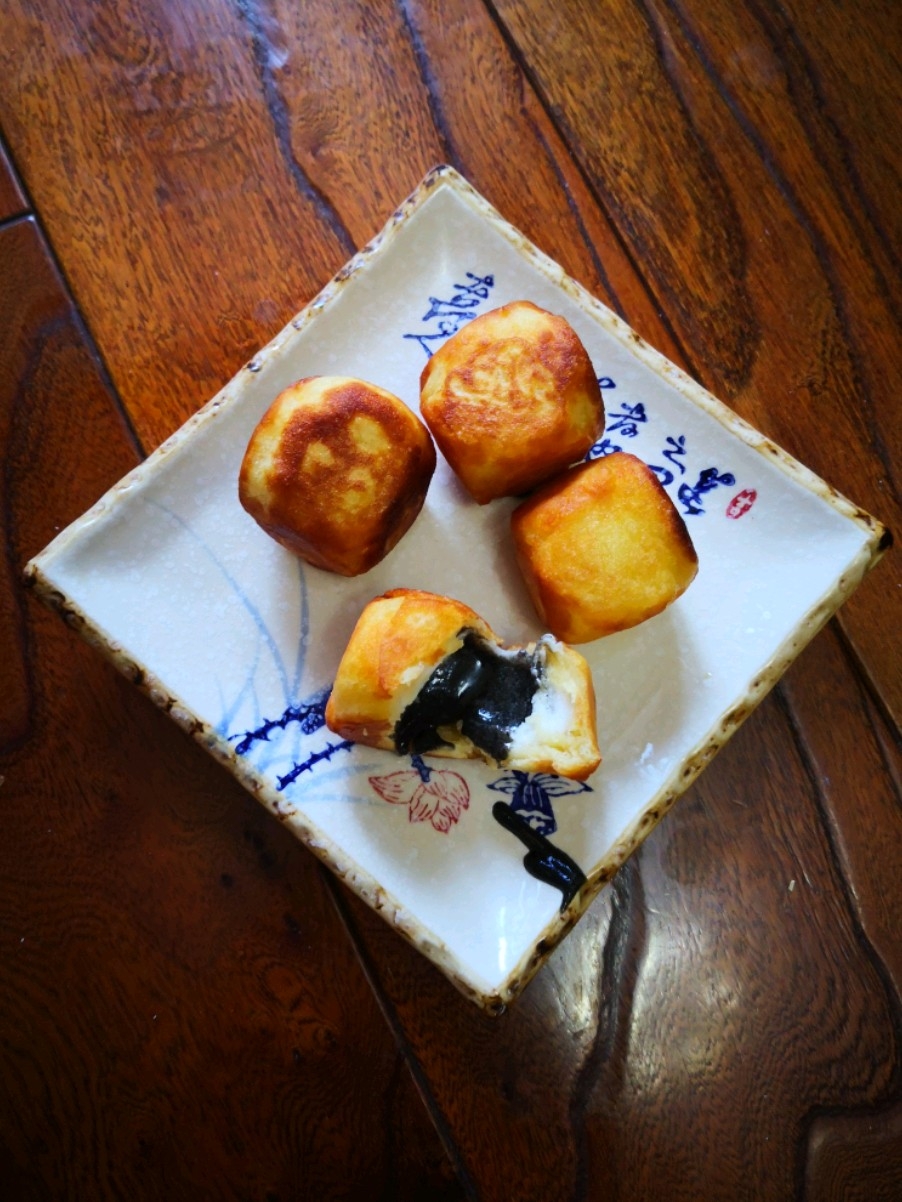#柏翠大赛#crack Bread
1.
225 grams of bread flour, 75 grams of low-gluten flour, 5 grams of instant dry yeast, 30 grams of caster sugar, 5 grams of salt, 9 grams of milk powder, 168 grams of ice water, 30 grams of butter.
2.
Put the dough ingredients except butter together and beat until a thicker film can be drawn
3.
Add butter
4.
Stir until you can pull out a thin and smooth film
5.
Put the dough in the fresh-keeping bag and press it into a dough cake and send it to the refrigerator to freeze for 30 minutes
6.
When freezing the dough, beat the flaky butter with a rolling pin and roll it out
7.
Take out the frozen dough, roll it into a dough sheet that is the same length as the butter and twice the width, and put the rolled butter in the middle of the dough.
8.
Fold the dough on both sides inward and seal the mouth
9.
Roll out the dough
10.
30% off each 1/3 of the back
11.
Roll out the dough in the direction of the folds, and then perform a second three-fold fold at 1/3 points
12.
Put the dough in the refrigerator and chill for 30-60 minutes
13.
Roll out the refrigerated dough into a 4mm thick piece, with the width as large as possible than the size you need to cut
14.
Cut off the sides and cut off the sides to be exactly the size you want
15.
Cut into an isosceles triangle with a base of 10cm and a height of 25cm
16.
Roll the dough from the bottom to the sharp corners
17.
Arrange on the baking tray and press the sharp corners underneath, and put it in a warm and humid place for the final fermentation
18.
Finally, when the fermentation is over, brush the egg liquid on the surface. Do not brush to the cutting level and just brush the surface.
19.
Put it into a preheated 180℃ oven, middle level, up and down heat, 18 minutes.
20.
After baking, remove from the baking tray and let cool

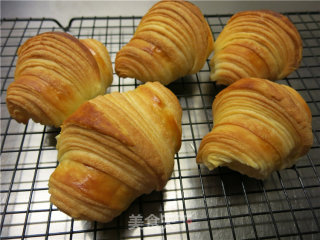
Tips:
Xiaoyingzi's words:
1. Freezing the dough is to control the temperature of the dough and avoid fermentation. Before wrapping the butter, keep the softness and hardness of the butter and dough the same.
⒈ Pay attention to the temperature of the dough during the operation, and avoid mixing the pastry. The level of the pastry will not be good. The temperature during fermentation should not exceed 35℃
⒉ Generally, it is necessary to refrigerate and relax after two trifolds, but if the dough can be rolled out smoothly without rebounding, it is not necessary to relax, it may be better to do it in one go.
⒊ It turned out that I didn’t know whether I rolled the dough in the direction of the hemming or the direction of the opening. I was very entangled when I rolled it. Later, Teacher Liberty stated in her blog that I understand it. Just remember one thing: every time It's ok if the direction of rolling is different from last time.
⒋ When cutting, pay attention to the isosceles triangle, that is, the angle opposite to the center of the side, do not cut into a right triangle.
⒌ When the shaped croissant is fermented, the sharp corners should be pressed at the bottom, otherwise the corners will be opened after fermentation, and even the appearance of the croissant will be lost. Go deeper. I bake the croissant several times, but I know the difference in taste is not enough. The croissant is delicious and creamy. It feels very greasy when the fire is light. It is estimated that the wrapped butter is not completely forced. The results come out, so the heat is also very important.
⒎ Use a relatively high temperature at the beginning of baking. When the dough is completely expanded and shaped, the temperature can be lowered by ten degrees according to the coloring situation. Before the dough is shaped, do not open the door of the oven. You can adjust it after the uneven coloring. In summary, making croissants is a very flexible thing. The theory should be mastered, and the specific operation should be flexible according to your actual situation. control.


